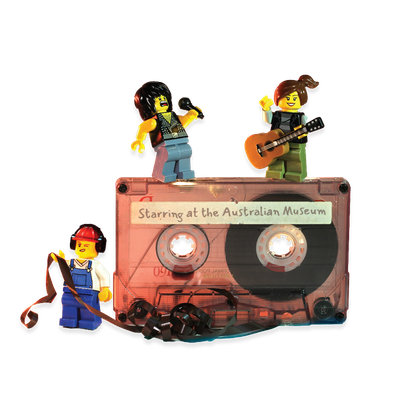Your search returned 39 results
By Page Type
By Tag
- All
- fish (966)
- blog (696)
- fishes of sydney harbour (401)
- First Nations (299)
- Blog (236)
- AMRI (169)
- archives (164)
- Eureka Prizes (146)
- Aboriginal and Torres Strait Islander (135)
- insect (126)
- Ichthyology (124)
- geoscience (109)
- minerals (102)
- climate change (99)
- podcast (94)
- Fish (91)
- Anthropology (89)
- International collections (80)
- Minerals Gallery (78)
- wildlife of sydney (78)
- Labridae (77)
- frog (74)
- gemstone (70)
- photography (66)
- history (64)
- Mollusca (60)
- gem (59)
- staff (59)
- Birds (56)
- Gems (56)
- Indonesia (56)
- education (56)
- shark (55)
- AMplify (54)
- people (53)
- earth sciences (50)
- exhibition (50)
- past exhibitions (50)
- Gobiidae (48)
- sustainability (46)
- Pomacentridae (45)
- Serranidae (44)
- lifelong learning (42)
- science (42)
- Earth and Environmental Science (41)
- Syngnathidae (41)
- Ancient Egypt (40)
- Bali (40)
- bird (40)
- dangerous australians (40)
-
What are fossils?
https://australian.museum/learn/australia-over-time/fossils/The word ‘palaeontology’ refers to the study of ancient life. It is derived from the Greek words palaios (ancient) and logos (study). Fossils form the basis of this science.
-
Earth science
https://australian.museum/learn/minerals/The Mineralogy and Palaeontology collections include rocks, minerals, gemstones and fossils, and reveal how the earth was formed.
-
Collection objects in 3D
https://australian.museum/inside-out/collections-in-3d/See some of our rare and unique natural science and cultural collection objects in 3D.
-
Fossils in Canowindra, NSW
https://australian.museum/learn/australia-over-time/fossils/sites/canowindra/The Canowindra fossil fauna is a very rich Late Devonian fish fauna and is listed as part of Australia's National Heritage.
-
Fossils in Grenfell, NSW
https://australian.museum/learn/australia-over-time/fossils/sites/grenfell/The Grenfell fossil fauna represents the youngest Devonian locality in New South Wales, and includes a wide variety of placoderm, acanthodian and sarcopterygian fishes.
-
Fossils in Alcoota, NT
https://australian.museum/learn/australia-over-time/fossils/sites/alcoota/The grass-covered plains at Alcoota Station form a thin veneer over an enormous bed of fossil bones that are around eight million years old.
-
Fossils in Naracoorte, SA
https://australian.museum/learn/australia-over-time/fossils/sites/naracoorte/Pleistocene fossil vertebrate deposits of Victoria Fossil Cave at Naracoorte are considered to be Australia's largest and best preserved.
-
Fossils in Lightning Ridge, NSW
https://australian.museum/learn/australia-over-time/fossils/sites/lightning-ridge/Deposits at Lightning Ridge yield some of the rarest, most beautiful and precious fossils in the world.
-
Fossils in Bluff Downs, QLD
https://australian.museum/learn/australia-over-time/fossils/sites/bluff-downs/Bluff Downs is recognised to be one of the most significant fossil sites of Pliocene age in Australia.
-
How do fossils form?
https://australian.museum/learn/australia-over-time/fossils/how-do-fossils-form/For a plant or animal to become a fossil, a series of events must occur...
-
Discover more
2025 Australian Geographic Nature Photographer of the Year
Special exhibition
Free entry
Now open -
Discover more
Unfinished Business
Special exhibition
Free entry
Now open -
Discover more
Wansolmoana
Permanent exhibition
Free entry
Open daily -
Find out more
Burra
Permanent kids learning space
Free entry
10am - 4.30pm![]()
-
Discover more
Minerals
Permanent exhibition
Free entry
Open daily![]()




